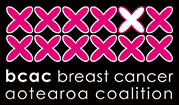If you’re a younger woman with breast cancer, you may be concerned about how the disease and treatment may affect your fertility and your future ability to have children.
There are a number of fertility preservation options open to younger women who have been diagnosed with breast cancer. Below, Dr Mary Birdsall, a fertility specialist with Fertility Associates, outlines the options currently available.
Women with breast cancer who are undergoing chemotherapy are able to have a funded consultation with a fertility expert in order to discuss their options.
The alkylating agents in chemotherapy such as cyclophosphamide will cause some or all of the eggs in the ovaries to be destroyed. Women are born with a fixed number of eggs and so there is no opportunity for regeneration of eggs. The impact that chemotherapy will have on an individual's eggs depends on the dose, the age of the woman and how many eggs she has. Even when a woman resumes menstruation post chemotherapy, her reproductive window is likely to considerably reduced. If a woman wants to have eggs, embryos or ovarian tissue frozen it is ideal to do this prior to chemotherapy being given.
Options for women in this situation include:
- do nothing except getting on with their breast cancer treatment
- consider using a donor egg after treatment if they are found to be menopausal
- have embryos frozen before treatment
- have eggs frozen before treatment
- have ovarian tissue frozen before treatment
Egg donation is where another woman goes through an in vitro fertilization (IVF) cycle, a batch of her eggs is collected, fertilised with the recipient's partner’s sperm and the consequent embryos are placed into the recipent's uterus. This may be funded for up to two cycles provided the recipient is aged less than 40. Success rates are related to the age of the egg donor but typically would sit at around a 40% live birth rate per cycle.
The second option is to undergo a cycle of embryo freezing prior to the start of chemotherapy. This option involves having ovarian stimulating drugs for about two weeks, then your own eggs are harvested, fertilised with your partner's or donor sperm and the embryos frozen. Embryo freezing may be funded but is not always an option for all because of time constraints, a partner is required and ideally the breast cancer should be oestrogen receptor negative.The chances of a pregnancy resulting from one cycle of embryo freezing are related to your age and if you are 36 or younger would be just under 50 per cent. If a woman has a hormone dependent breast cancer, there are some more experimental stimulation regimes which may be considered.
Option number three is egg freezing. This is not currently funded in New Zealand, although the Minister of Health has been asked to provide funding. Once again ovarian stimulating drugs are used for around two weeks, the eggs are collected and then frozen. This technology is new and there have been fewer than 1000 babies born worldwide using this technology so it is impossible to give success rates. This is also not always an option as some time is needed resulting in a delay in treatment of the cancer and the use of fertility drugs may be risky for women with hormone dependent cancers. The cost is around $9000 and then a further $2000 for thawing and replacement in the uterus.
We are also able to freeze ovarian tissue obtained via a laparoscopy. This tissue may then be reimplanted at a later date. This technique is very experimental with only 12 pregnancies reported to date. No funding is available. The advantage of this option is that it does not require ovarian stimulating drugs.
Finally, there is also interest in the concept of chemoprotection, which is when a medication called a Gonadotrophin Releasing Agonist is given at the same time as chemotherapy and may provide some protection to the eggs. Several large clinical trials are under way around the world to determine the efficacy and safety of this option. The drugs used in this technique are funded.
Any tissue frozen in the options listed above is stored in liquid nitrogen at minus 196 degrees centrigrade and may be frozen indefinitely. There is however legislation in New Zealand which limits storage to 10 years although an extension may be applied for.
It remains my aim that all women who have not completed their families and who are facing cancer treatments which may compromise their fertility options would have the opportunity to discuss their options with a fertility expert.



